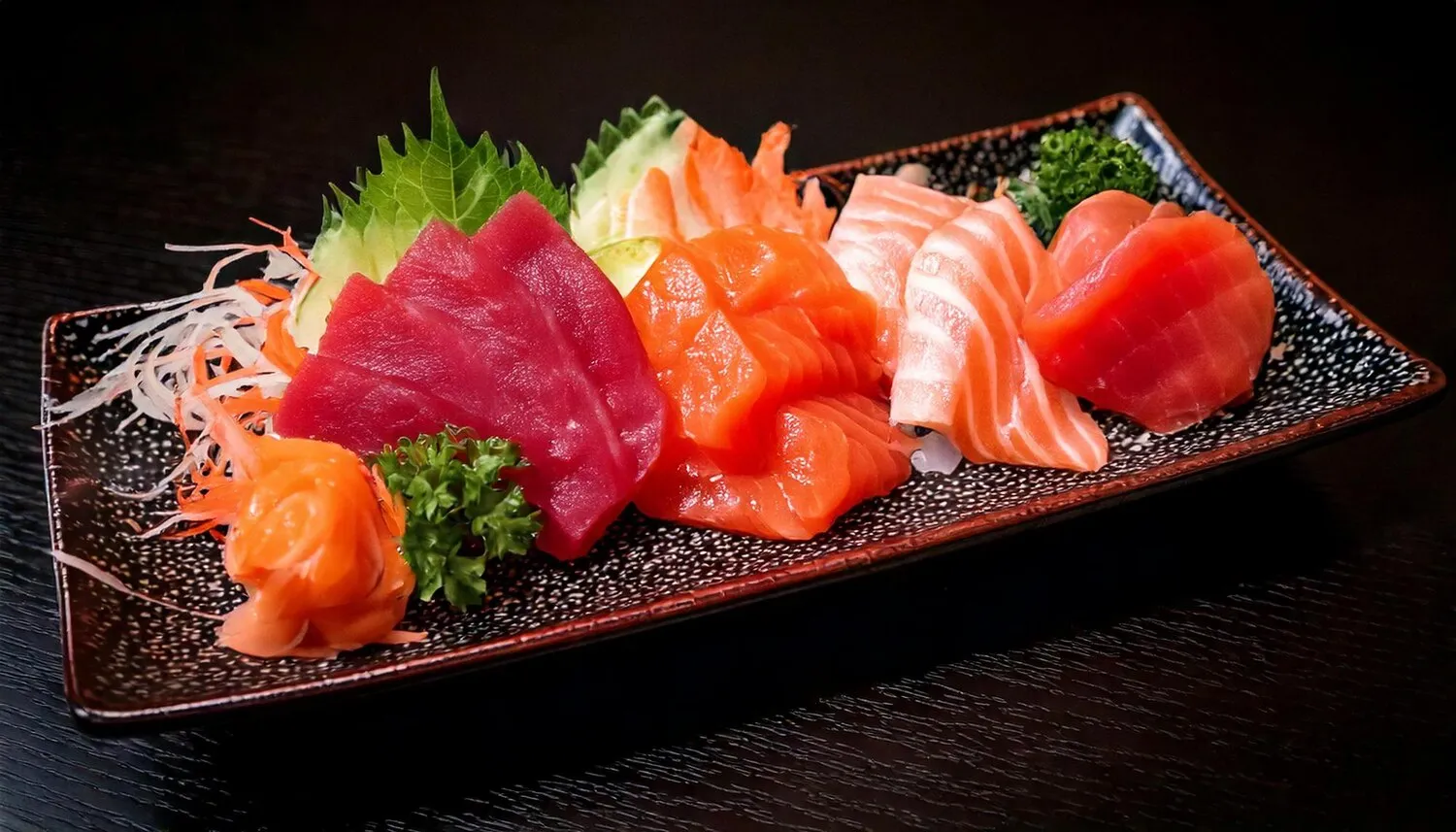
Sashimi
Thinly sliced raw fish. A classic Japanese dish that is available.
Nutrition Facts
* The % Daily Value (DV) tells you how much a nutrient in a serving of food contributes to a daily diet. 2,000 calories a day is used for general nutrition advice.
Orraio Sushi
The origins of sashimi can be traced back to the Muromachi period (1336-1573) in Japan. Before refrigeration, preserving food was crucial. Sashimi evolved from a need to consume fish while it was still at its freshest, often alongside vinegared rice (the precursor to sushi). Techniques for carefully slicing and presenting the fish were developed to both enhance flavor and prevent spoilage.
Sashimi is deeply ingrained in Japanese culinary culture, representing an appreciation for simplicity, freshness, and skillful preparation. It's often considered a refined and elegant dish, enjoyed on special occasions and as part of a larger multi-course meal.
Presentation Matters
The presentation of sashimi is highly valued. The arrangement of the slices, the choice of garnishes, and the overall aesthetic are all carefully considered to enhance the dining experience. It reflects Japanese aesthetic principles of minimalism and harmony.
Seasonal Fish
Japanese cuisine emphasizes seasonality. Sashimi is often prepared with fish that are in season, as they are considered to be at their peak flavor and texture during those times. This aligns with the Japanese concept of 'shun,' which celebrates the appreciation of food in its natural season.
Part of a Larger Meal
Sashimi is often served as a precursor to other dishes, setting the stage for a multi-course Japanese meal. It's considered a delicate and refreshing way to begin the meal, stimulating the appetite without being overly heavy.
Sashimi offers a delicate and nuanced flavor profile centered around the freshness and natural taste of the fish. Subtle sweetness, umami, and a clean, oceanic essence are key characteristics.
The primary flavor comes directly from the fish itself. Different types of fish offer varying degrees of sweetness (e.g., tuna), richness (e.g., salmon), or a more subtle, delicate flavor (e.g., snapper). Wasabi provides a pungent, sinus-clearing heat that complements the fish. Soy sauce adds a salty and umami-rich element, enhancing the overall flavor. Garnishes like daikon radish and shiso leaf offer refreshing and aromatic counterpoints.
Wasabi Etiquette
Avoid dissolving wasabi directly into the soy sauce. Instead, place a small amount of wasabi directly onto the sashimi before dipping it lightly in the soy sauce. This allows you to control the amount of wasabi and prevents the soy sauce from becoming overly diluted.
Dipping Technique
Dip only the edge of the sashimi into the soy sauce. Over-soaking the fish masks its delicate flavor. A light touch is key to enjoying the true essence of the sashimi.
Order of Consumption
Generally, it's recommended to start with lighter-flavored fish and progress to richer, fattier cuts. This allows you to fully appreciate the subtle nuances of each type of fish. For example, start with white fish and then move to tuna or salmon.
Freshness is Key
Ensure that the sashimi is sourced from a reputable supplier known for its fresh seafood. The quality of the fish is paramount to the overall experience and safety.
Explore additional Raw Fish dishes and restaurants
Explore Raw FishDiscover top dining spots and culinary experiences in Cascavel.
Explore CascavelLearn more about the food culture, restaurant scene, and culinary heritage of Brazil.
Explore Brazil